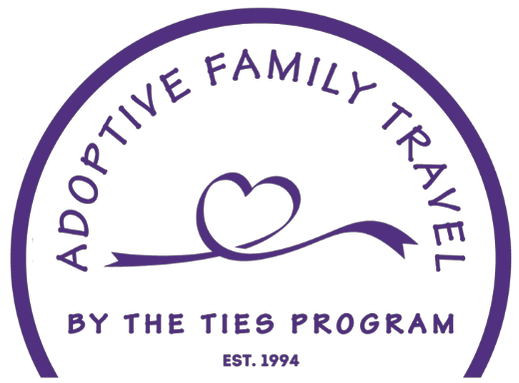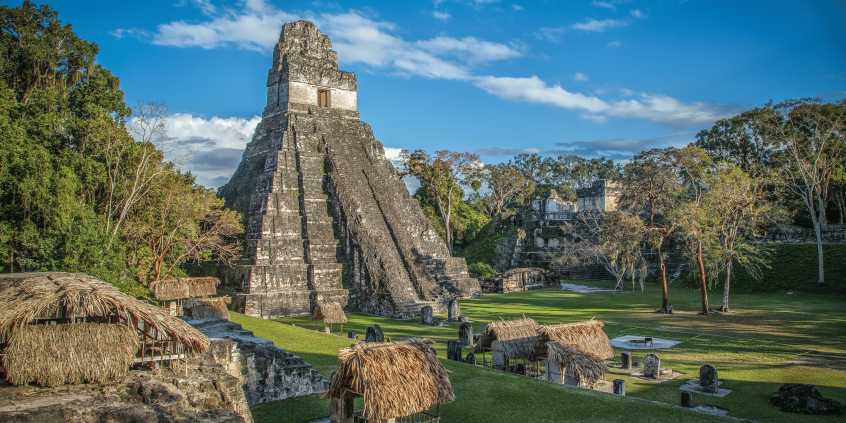Adoptees and families share with us a wide variety of connections they hope to make when preparing for a heritage journey. Wish lists include visiting a hotel that was “home” years ago, reconnecting with a foster mother or other caregivers, connecting with a driver, and, for some, meeting members of their birth family.
Initiating a birth family search is an extremely individual decision and should be considered within the unique needs and experiences of each adoptee and their family.
A birth search is not an event as much as it is a journey – and one that isn’t clearly mapped. While you might have an idea of where you want to go (learning more about a birth family) the actual destination is unknown (information may or may not be found; it may or may not be what one thought it was going to be). If the journey’s path results in meeting birth family, the journey does not end there. Rather a door is opened as a reunion marks a change in the relationship.
Thinking through these challenges before you begin the search journey helps in deciding if the adoptee is ready to continue or if more time is needed.
#1: The Role of Adoptive Parents: Adoptive parents overwhelmingly recognize the desire to search and its importance to adoptees. There are, however, differing opinions within the adoption community, and especially amongst adoptees, on whether or not parents should play a role in their children’s searches, and if so, what that role should be. It is important that adoptees are in the lead in choosing to search. If an adoptee says they aren’t ready or don’t want to search, adoptive parents should respect this desire.
#2: Prepare for the Journey: In choosing to search, one needs to prepare for all possible outcomes, both positive and negative. If a search is unsuccessful, managing the disappointments in the search experience is often significantly emotionally challenging for adoptees and their families.
There are several non threatening ways to prepare for the many variables involved in search and reunion like reading, watching reunion videos on YouTube, and even watching movies (like Netflix’s Found).
It is important to have ongoing, open discussions as you embark into the unknown. These frequent and sometimes painful conversations are an integral part of this journey. If an adoptee is unable or unwilling to have these kinds of discussions, they may not be ready to search. On the other hand, sometimes a need or desire for more information is misinterpreted as the desire for a reunion.
If you pursue a birth family search, make sure adoptees in particular, but also parents/family have a safe space to talk through their thoughts about the process and any results. This might be an adoption-competent therapist (who will likely have experience in birth family connections and the complex emotions resulting), a school counselor, or a good group of friends. A new life chapter is being opened and the lack of control over the process and outcome can be frustrating and confusing at times. Having the insights and objectivity of an additional support person can be a great way to handle the stress.
#3: Intercountry Adoptions in Context: We would like to assume that in the history of intercountry adoptions everyone was always acting in good faith and with the highest of morals. That being said, there is evidence in almost every country that some trafficking, fraud, negligent, and bad faith adoptions occurred. It can be hard to distinguish what an unethical adoption looks like and; what the motivations were involved in placing a child. There are many places in an adoption process where one person (a birth mother, a lawyer, a judge, a paper work shuffler at a government office, an adoption agency rep, etc.) can make one small decision (or a typo!) that can turn an adoption done in good faith to something that is more challenging to process. It takes a careful eye and understanding of not only an individual’s paperwork, adoption story, and wider country’s history of adoption to say with any certainty that a particular adoptee’s story includes any of those circumstances. Given all of this, it’s important for families to consider that both a deadend and discovery of a fraudulent adoption are possible outcomes when searching. It can be challenging, deeply painful, and bewildering if one learns, or suspects, their adoption is fraudulent. We strongly encourage adoptees and their loved ones seek emotional support if they have concerns about their adoption process.
#4: The search process is different in every country: The process of searching is as varied as the countries adoptees are from and their stories. In some countries, searches are conducted by government bodies (like a child welfare department), others government entities will assist on a part of the process (like DNA testing at a police station). Still in other countries searchers are conducted by specialized independent contractors who work for themselves. How searches are conducted in a country changes over time, so it’s important to make sure you have the most accurate and up-to-date information.
#5: Considering the Birth Family’s Perspective: Birth mothers come from a range of backgrounds. The vast majority of birth mother’s do not make the decision to place a child for adoption lightly. Some have hidden their pregnancy and subsequent adoption from people who are important to them. This may include both family members and friends who were in their lives during the time of the pregnancy and adoption, as well as those that have come into their lives since (like a new husband and additional children). Sometimes it’s a hidden secret she keeps close to her heart – wondering and worrying about her child every day alone. For these reasons, searchers are cautious and careful when connecting with birth mothers. Upon being found, birth mothers share a range of emotions – surprise, fear, joy, shame, and guilt are just a few of them. Birth mothers have many considerations when deciding if they are ready to meet. Some of these are emotional – is she prepared to face her emotions directly? Is she going to be able to say goodbye again? Should she reveal to loved ones her long held secret? How will they react? Others are logistical – Can she take the time away from work and her household duties for the reconnection visit? Some birth mothers, and, sometimes, other family members, are ready and excited to meet. Others take more time. It’s important to remember that it is also her choice to meet with you. Just like adoptees, birth mothers have wondered and worried about the children they’ve placed for adoption AND have lived their lives day-in and day-out since the placement. All this being said, the vast majority of birth family and adoptee reconnections we’ve witnessed have been a positive experience for all involved. A reminder, it’s important to not make assumptions about the circumstances of a birth mother/family and any resulting emotions they may have. The circumstances in your birth mother/family might look very different than above. The above are simply the themes and situations we’ve encountered over the last 30 years.
#6: Searching and Heritage Journeys: Searching at any point in an adoptee’s life can be an important step for that adoptee. However, we’ve found that searching in the year or so prior to a heritage journey is often the most beneficial. Doing so provides space for an adoptee and their birth family to reconnect while in-country (if a search is successful) and, if a search is not successful, it provides other ways for an adoptee to reconnect with their land, culture, and heritage of birth outside of the search process. When traveling with a group on a heritage journey, adoptees naturally share and discuss their experiences in search and reunion, both successful and unsuccessful. This normalizes their experience and provides a supportive environment for adoptees to share in a community of their peers.
#7: The Reunion Itself—What’s It Like?: Meeting people and visiting places related to your adoption varies greatly. We generally recommend that first reconnection visits occur in a “neutral” place, rather than the birth family’s home or community, as it protects the birth family, the adoptee, and the adoptive family. Having a reconnection visit in the first days of a trip allows for the natural anxiety prior to the meeting to dissipate, helps adoptees have a richer experience in their country and culture of birth, and allow for additional reconnection visits (if it’s agreed upon by all parties and there is time in the schedule). Here are some things to consider, visualize, and talk about as a family.
- Most discussion is done via a translator, which has pros and cons:
- The pros: translation slows conversation, giving you a chance to think. Having a translator typically helps with cultural differences and logistical issues.
- The cons: the translator may not translate everything, or may not translate the intended emotion.
- Some people you meet can be very emotional, and may want to stroke an adoptee’s hair or hold their hand, can be tearful, or tearfully joyous.
- Some people you meet are the exact opposite—and not always because they are not feeling emotion, but because they believe strong emotions would be too difficult for the adoptee. Or, they may feel they need to be emotionally strong for their other children or family members meeting with your family.
- Some adoptees feel very connected, almost on a surreal level. Others feel very disconnected, and this disconnect is conflicting or confusing for them.
- Sometimes planned meetings do not happen—someone gets sick, or is unavailable at the last minute. It is important to stress there are times when plans do not come to fruition, but we’re all making the best effort possible.
- Most times, reunions are planned in advance, but sometimes, once you are in-country, opportunities arise, creating a mix of complicated emotions.
#8: Remember it’s a Journey: After a reconnection sometimes some members (adoptees, birth family, adoptive family) may want to continue communication while others do not. And when that desire is not fulfilled, it can be devastating to individuals in the reconnection. Preparing yourself for a relationship to expand past a reconnection visit, go quiet for a period of time, and/or, potentially end with one visit is essential, even if it is hard to contemplate.
Initiating a birth family search is a profound and sometimes fraught experience and not one that should be made lightly. No matter the choices adoptees make about searching, our team of experts in the field are there to walk alongside adoptees who travel with us during their heritage journey.
If you have any questions, we’re happy to help! You can contact us at info@adoptivefamilytravel.com







